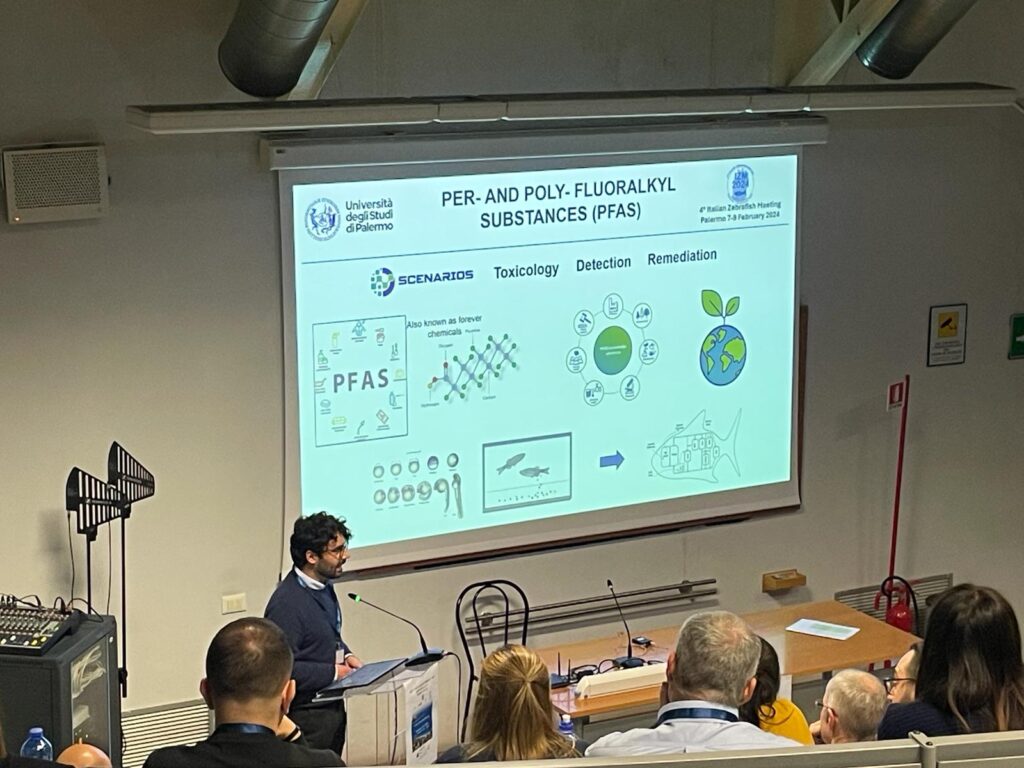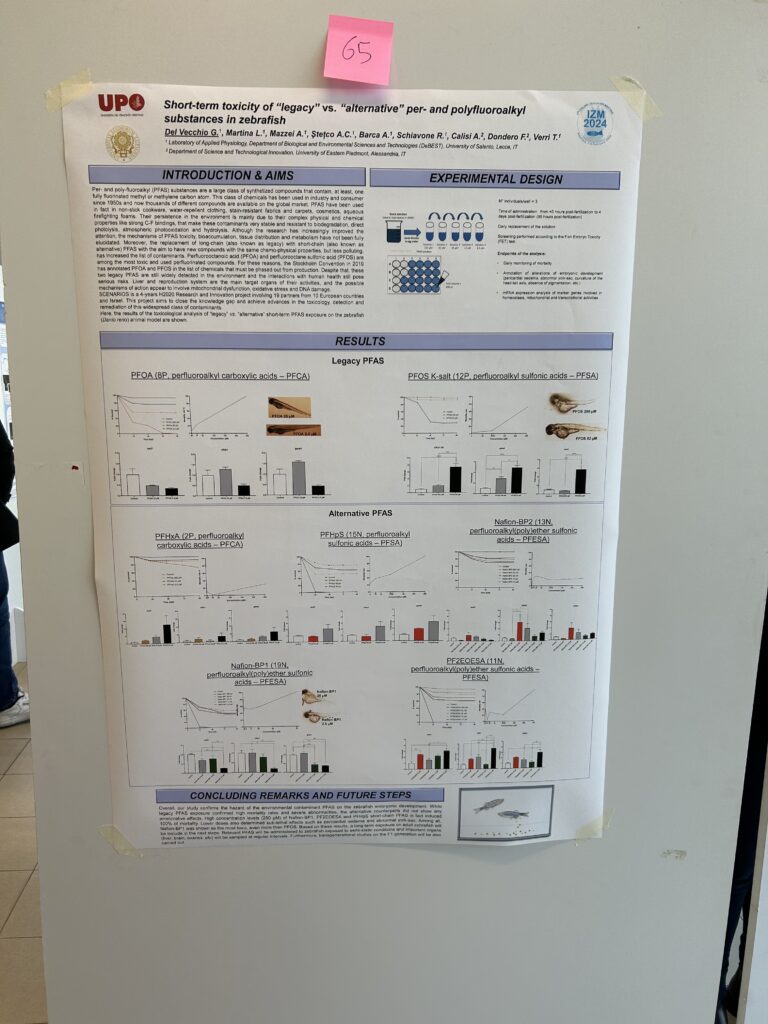During the 4th Italian Zebrafish Meeting IZM2024 that was held in Palermo from the 7th to the 9th February, we had the occasion to present SCENARIOS project and the first results obtained using the zebrafish model. The meeting provides a forum for presentation and discussion of the most innovative and exciting research currently ongoing in Italy using the zebrafish model. The opportunity for our project arose when a poster was selected for presentation during the meeting. The poster was among the 12 selected posters, and our colleague Gianmarco Del Vecchio, from University of Salento had a 1 minute pitch presentation during which the aims and objectives of Scenarios were presented.


The presentation explained how in SCENARIOS, we used the zebrafish model to analyse in vivo the toxicological effects of five ‘alternative’ PFAS (PF2EOESA, Nafion-BP2, PFHpS, PFPeS and Nafion-BP1) in comparison to one ‘legacy’ counterpart (PFOS). Due to their toxicity, greater attention has been given to ‘alternative’ PFAS with sulfonic terminal moiety. Embryos, from the beginning of development (less than 3 hours post-fertilization, hpf) until complete hatching (96 hpf), were exposed for 4 days to increasing concentrations (2.5, 12, 25, 92 and 250 µM) of contaminants. Daily monitoring was performed to collect data on mortality, hatching rate, yolk-sac area, malformations and EC50 (according to the Fish Embryo Toxicity test procedures). Since PFAS are known to mainly target mitochondrial pathways, PPARα regulated mechanisms and antioxidant response in liver and kidney, genes (nfkb1, sod1, gata4) involved in homeostasis, mitochondrial and transcriptional activities were also investigated. By using molecular docking and molecular dynamics approaches, in silico analyses were performed to establish functional interaction between ‘legacy’ and ‘alternative’ PFAS vs. proteins. The results show¡ that, while inducing less mortality rates than ‘legacy’, ‘alternative’ PFAS do affect zebrafish development, thus representing toxic compounds of great concern.
In the meeting there were at least a couple of other posters dealing with pfos/pfoas, but they referred to very basic analyses… we have been searched by other colleagues for establishing points of contact and (possibly) future collaboration.
